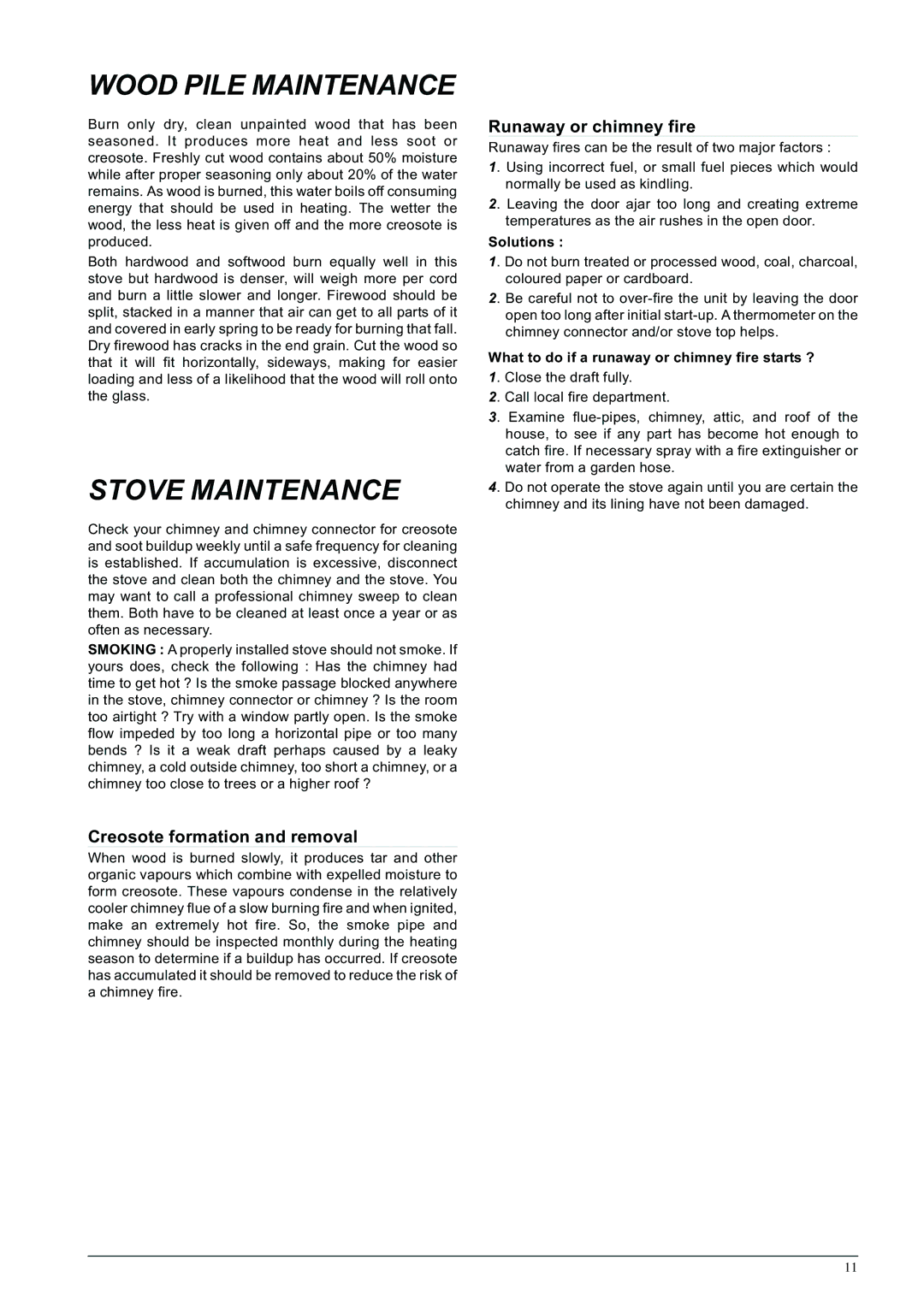
WOOD PILE MAINTENANCE
Burn only dry, clean unpainted wood that has been seasoned. It produces more heat and less soot or creosote. Freshly cut wood contains about 50% moisture while after proper seasoning only about 20% of the water remains. As wood is burned, this water boils off consuming energy that should be used in heating. The wetter the wood, the less heat is given off and the more creosote is produced.
Both hardwood and softwood burn equally well in this stove but hardwood is denser, will weigh more per cord and burn a little slower and longer. Firewood should be split, stacked in a manner that air can get to all parts of it and covered in early spring to be ready for burning that fall. Dry firewood has cracks in the end grain. Cut the wood so that it will fit horizontally, sideways, making for easier loading and less of a likelihood that the wood will roll onto the glass.
STOVE MAINTENANCE
Check your chimney and chimney connector for creosote and soot buildup weekly until a safe frequency for cleaning is established. If accumulation is excessive, disconnect the stove and clean both the chimney and the stove. You may want to call a professional chimney sweep to clean them. Both have to be cleaned at least once a year or as often as necessary.
SMOKING : A properly installed stove should not smoke. If
yours does, check the following : Has the chimney had time to get hot ? Is the smoke passage blocked anywhere in the stove, chimney connector or chimney ? Is the room too airtight ? Try with a window partly open. Is the smoke flow impeded by too long a horizontal pipe or too many bends ? Is it a weak draft perhaps caused by a leaky chimney, a cold outside chimney, too short a chimney, or a chimney too close to trees or a higher roof ?
Creosote formation and removal
When wood is burned slowly, it produces tar and other organic vapours which combine with expelled moisture to form creosote. These vapours condense in the relatively cooler chimney flue of a slow burning fire and when ignited, make an extremely hot fire. So, the smoke pipe and chimney should be inspected monthly during the heating season to determine if a buildup has occurred. If creosote has accumulated it should be removed to reduce the risk of a chimney fire.
Runaway or chimney fire
Runaway fires can be the result of two major factors :
1. Using incorrect fuel, or small fuel pieces which would normally be used as kindling.
2. Leaving the door ajar too long and creating extreme temperatures as the air rushes in the open door.
Solutions :
1. Do not burn treated or processed wood, coal, charcoal, coloured paper or cardboard.
2. Be careful not to
What to do if a runaway or chimney fire starts ?
1. Close the draft fully.
2. Call local fire department.
3. Examine
4. Do not operate the stove again until you are certain the chimney and its lining have not been damaged.
11
